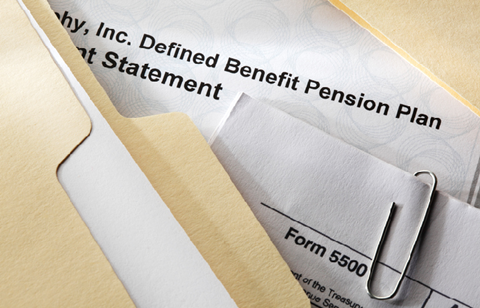
Defined benefit (DB) pension schemes for FTSE 100 organisations have achieved a surplus of £3 billion, moving out of deficit for the first time in 10 years, according the JLT Employee Benefits monthly index.
The index, which tracks the funding position of all UK private sector DB schemes based on the IAS19 numbers disclosed in organisations' reports and accounts, shows that the deficit for FTSE 350 schemes has dropped from £43 billion to zero since July 2017. It also registered a drop in the deficit among all UK private sector pension schemes, from £130 billion on 31 July 2017, to £22 billion on 31 July 2018.
Charles Cowling, chief actuary at JLT Employee Benefits, said: “After 10 years of deficits, finance directors may be celebrating today, as FTSE 100 pension schemes finally move into surplus. Of course, this is the overall picture and individual [organisations] and their pension schemes may show different positions. Equally, in many cases, these accounting numbers are not the same figures that pension scheme trustees will be looking at when making demands on employers for pension scheme funding. Trustees tend to be a lot more cautious when looking at their pension scheme valuations and may therefore still be making requests on employers for additional funding of pension deficits.
“That said, the latest move is still good news for all UK pension schemes. Despite an unsettled political backdrop, with Brexit looming, markets have continued to be favourable for pension schemes. Moreover, the improvements in life expectancy, which have added so much to pension scheme liabilities over the last 10 or 20 years, do indeed seem to be slowing."
Pensions scheme assets among FTSE 100 organisations have risen by £5 billion, from £671 billion in 2017, to £676 billion in 2018, while liabilities have dropped from £705 billion to £673 billion.
FTSE 350 scheme assets have risen from £758 billion to £765 billion, an increase of £7 billion since July 2017. Liabilities for these schemes show a decrease of £36 billion, from £801 billion to £765 billion.
Assets for all UK private sector pensions schemes are now £1,584 billion, and liabilities are £1,606 billion; the corresponding figures as of 31 July 2017 were £1,530 billion and £1,660 billion.
The funding level for FTSE 100 and FTSE 350 organisations is now 100%, compared with 95% for each in 2017. The overall funding level for UK private sector schemes is 99%, up from 92% last year.
Cowling continued: “Much may depend on Thursday’s meeting of the Monetary Policy Committee at the Bank of England, with City experts and pundits alike widely predicting an interest rate rise. If [Bank of England] base rates increase to 0.75%, as expected, it will only be the second time since the 2008 financial crisis that the bank has increased rates. Pension schemes have been hoping to see interest rate rises for most of the last 10 years. The record low interest rates through this period have been a key driver in producing huge pension scheme deficits, which are only just now reaching recovery as a result of the long bull market in equities.
“In combination, these factors may present an ideal opportunity for pension schemes to lock in their position and switch out of risky assets into investments that more closely match their liabilities. Having spent 10 years clawing their way back into surplus, it would be a very sad day for pension schemes if all that progress was lost in another crisis of confidence in markets.
“Indeed, finance directors and trustees alike should be actively assessing the many favourable opportunities now available to lock in their liabilities. This can be either through the purchase of matching cash-flow driven investments (CDI), of which there are a growing number of options now available, or through the purchase of annuities, where insurance company pricing continues to be favourable and 2018 looks set to be another bumper year for insurance company transactions.”











